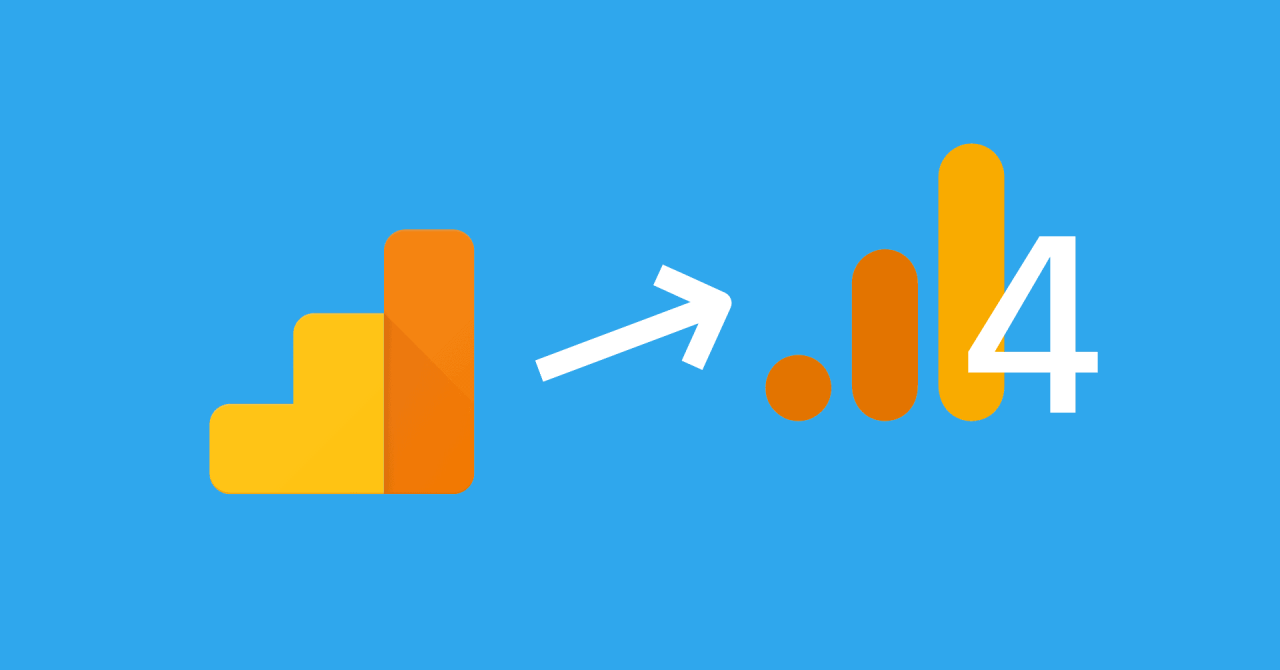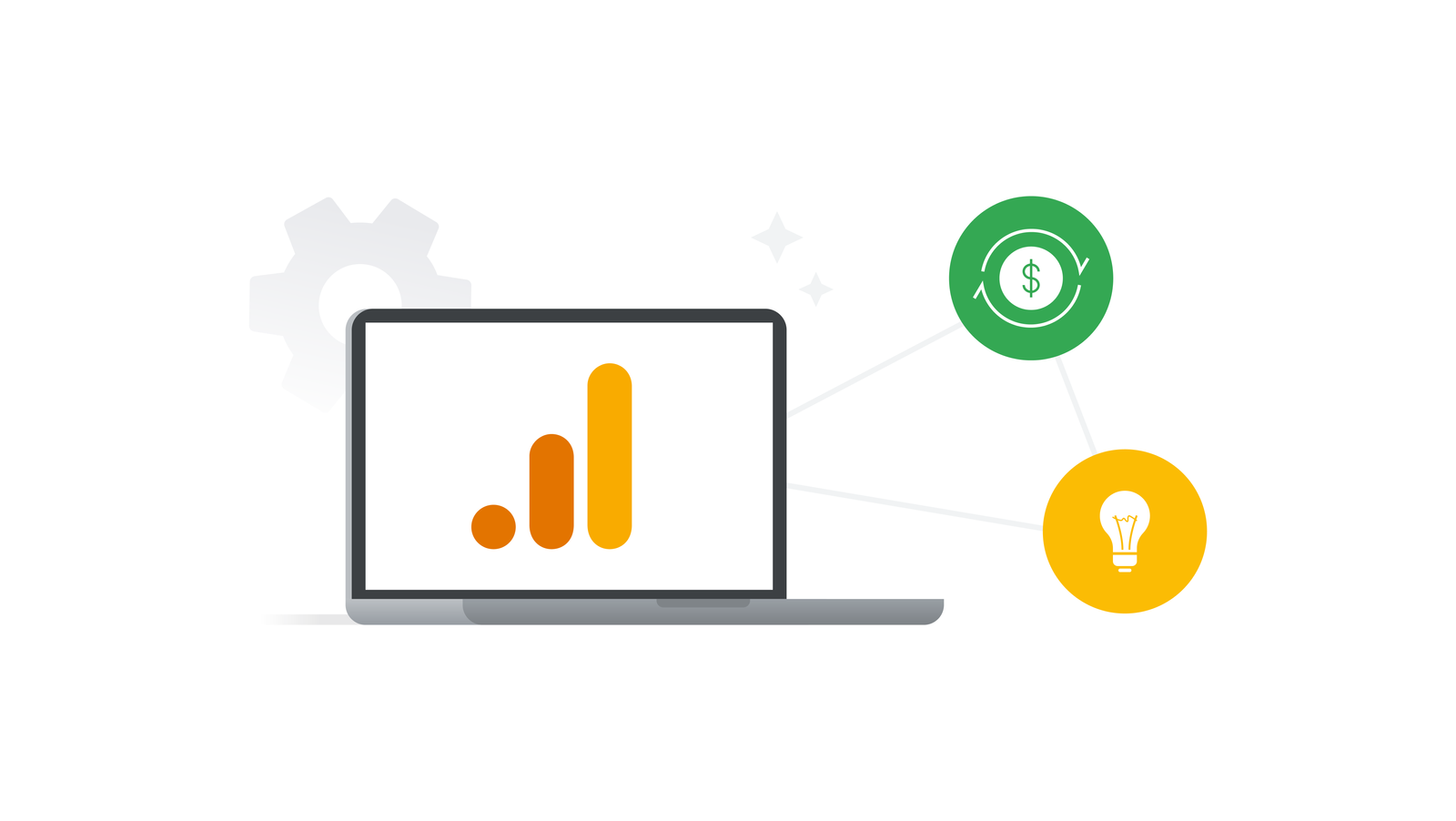As advertising agencies navigate the ever-changing digital landscape, to stay up-to-date with the latest advancements in analytics. The introduction of GA4, the new version of Google Analytics, brings a host of changes and opportunities for agencies to optimize their advertising campaigns. This guide aims to provide advertising agencies with a comprehensive understanding of the key differences between GA4 and Universal Analytics, the benefits of upgrading to GA4, and the challenges involved in transitioning to the new platform. By following the best practices outlined in this guide, agencies can successfully implement GA4 for their advertising campaigns and leverage its advanced features to drive better results.
Key Takeaways
- Upgrading to GA4 provides agencies with enhanced data collection and measurement capabilities.
- Auditing your current analytics setup is essential to ensure a smooth transition to GA4.
- Updating tracking codes and tags is necessary to ensure accurate data tracking in GA4.
- Migrating data from Universal Analytics to GA4 requires careful planning and execution.
- Setting up conversion tracking and creating custom audiences in GA4 can improve campaign performance.
Understanding the Changes in GA4
Key Differences between GA4 and Universal Analytics
GA4 introduces several key differences compared to Universal Analytics:
- Event-based data model: GA4 uses an event-based data model, which allows for more flexibility and granularity in tracking user interactions. This means that instead of relying solely on pageviews and sessions, GA4 focuses on tracking specific events such as clicks, video views, and form submissions.
- Enhanced cross-device tracking: GA4 offers improved cross-device tracking capabilities, allowing advertisers to gain a more comprehensive understanding of user behavior across multiple devices. This is particularly valuable in today’s multi-device world, where users often switch between smartphones, tablets, and desktops.
- Machine learning-powered insights: GA4 leverages machine learning to provide more advanced insights and predictions. This enables advertisers to uncover valuable patterns and trends in user behavior, helping them make data-driven decisions to optimize their advertising campaigns.
- Privacy-centric approach: GA4 takes a privacy-centric approach by providing more control over data collection and emphasizing the importance of user consent. This aligns with the increasing focus on privacy regulations and user data protection.
- Streamlined data organization: GA4 introduces a more streamlined data organization structure, making it easier to manage and analyze data. The new data streams and events architecture allows for better organization and categorization of data, providing a clearer view of user interactions and campaign performance.
Benefits of Upgrading to GA4
Upgrading to GA4 offers several key benefits for advertising agencies:
- Enhanced Cross-Platform Tracking: GA4 provides improved tracking capabilities across multiple platforms, including websites, mobile apps, and offline interactions. This allows agencies to gain a comprehensive view of user behavior and engagement across different touchpoints.
- Advanced Machine Learning Insights: GA4 leverages advanced machine learning algorithms to provide actionable insights and predictive analytics. This enables agencies to make data-driven decisions and optimize their advertising campaigns for better performance.
Tip: Take advantage of GA4’s machine learning capabilities by regularly reviewing and acting upon the insights provided.
- Future-Proofed Analytics: By upgrading to GA4, agencies ensure they are prepared for the future of analytics. GA4 is designed to adapt to evolving technologies and privacy regulations, providing a solid foundation for long-term analytics success.
- Streamlined Event Tracking: GA4 introduces a more streamlined event tracking model, making it easier for agencies to track and measure specific user actions. This allows for more granular analysis and optimization of advertising campaigns.
Tip: Take the time to review and update your event tracking strategy to fully leverage the capabilities of GA4.
Challenges in Transitioning to GA4
Transitioning from Universal Analytics to GA4 can pose several challenges for advertising agencies. One of the main challenges is understanding the new data model and how it differs from the previous version. Data modeling plays a role in GA4, and agencies need to familiarize themselves with the new event-based model.
Another challenge is migrating historical data from Universal Analytics to GA4. While GA4 provides tools for data migration, agencies need to ensure that the data is accurately transferred and mapped to the new structure.
Additionally, agencies may face challenges in retraining staff to work with GA4. The new interface and features of GA4 may require additional training and upskilling to fully leverage its capabilities.
To overcome these challenges, agencies should consider the following:
- Conducting thorough training sessions to educate staff about the new data model and features of GA4.
- Collaborating with Google Analytics experts or consultants to ensure a smooth transition.
- Allocating sufficient time and resources for data migration and testing.
Tip: It’s important to plan and prepare well in advance to minimize disruptions during the transition to GA4.
Preparing for the GA4 Transition
Auditing Your Current Analytics Setup
When auditing your current analytics setup, it is important to ensure that all tracking codes and tags are implemented correctly. This includes verifying that the Google Analytics tracking code is present on all relevant pages of your website and that it is properly configured to track the desired metrics and events.
Additionally, you should review the goals and conversions set up in your current analytics platform. Make sure they align with your business objectives and are accurately tracking the desired user actions.
To assist with the auditing process, you can create a checklist of key items to review. This can include checking for any duplicate or conflicting tracking codes, verifying that cross-domain tracking is set up correctly, and ensuring that event tracking is capturing all relevant interactions.
Remember, a thorough audit of your analytics setup will help ensure accurate data collection and provide a solid foundation for transitioning to GA4.
Updating Tracking Codes and Tags
When updating tracking codes and tags in GA4, it is important to ensure that all the necessary events and parameters are properly implemented. Here are some key considerations:
- Consistency: Make sure that the naming conventions for events and parameters are consistent across all your tracking codes and tags. This will help you easily identify and analyze data.
- Migration: If you are migrating from Universal Analytics to GA4, it is crucial to update your tracking codes and tags to align with the new measurement model. This may involve mapping existing events and parameters to the corresponding GA4 events and parameters.
Tip: Keep a record of the changes made to your tracking codes and tags for future reference.
- Testing: Before deploying the updated tracking codes and tags, thoroughly test them to ensure that they are capturing the desired data accurately. Use tools like the GA4 DebugView to validate the implementation.
- Documentation: Document the updated tracking codes and tags, including the events and parameters being tracked, for easy reference and future troubleshooting.
Migrating Data from Universal Analytics to GA4
When migrating data from Universal Analytics to GA4, it is important to follow a structured process to ensure a smooth transition. Here are some key steps to consider:
- Export Data from Universal Analytics: Start by exporting your data from Universal Analytics, including important metrics and dimensions that you want to migrate to GA4.
- Map Data to GA4 Schema: Once you have exported the data, you will need to map it to the GA4 schema. This involves identifying the equivalent events, parameters, and user properties in GA4.
- Import Data into GA4: After mapping the data, you can import it into GA4 using the Data Import feature. This allows you to bring in historical data from Universal Analytics and merge it with the data collected in GA4.
Tip: Before importing the data, make sure to clean and validate it to ensure accuracy and consistency.
By following these steps, you can successfully migrate your data from Universal Analytics to GA4 and continue tracking and analyzing your website’s performance.
Implementing GA4 for Advertising Campaigns
Setting Up Conversion Tracking
Setting up conversion tracking in GA4 is essential for measuring the success of your advertising campaigns. By tracking conversions, you can determine the effectiveness of your ads and optimize your campaigns accordingly.
To set up conversion tracking in GA4, follow these steps:
- Identify the key actions or events that you want to track as conversions. These could include purchases, form submissions, or app installations.
- Create conversion events in GA4 for each of these actions or events. This will allow GA4 to track when these events occur on your website or app.
- Implement the necessary tracking codes or tags on your website or app to capture the conversion events. This may involve adding code snippets or integrating with your existing analytics tools.
Once you have set up conversion tracking in GA4, you will be able to analyze the performance of your advertising campaigns and make data-driven decisions to optimize your marketing efforts.
Tip: Regularly review and update your conversion tracking setup to ensure it aligns with your evolving business goals and objectives.
Creating Custom Audiences
Creating custom audiences in GA4 allows advertisers to target specific groups of users based on their behavior or characteristics. This feature is especially useful for running personalized and targeted advertising campaigns. To create a custom audience in GA4, follow these steps:
- Navigate to the Audience Builder – In the GA4 interface, go to the ‘Audiences’ section and click on ‘Create audience’.
- Define the Audience Criteria – Specify the criteria for your custom audience, such as user behavior, demographics, or events.
- Set the Audience Duration – Choose how long you want to include users in the custom audience based on their activity.
- Save and Use the Audience – Once you have defined the audience criteria, save the custom audience and use it in your advertising campaigns.
Tip: Experiment with different audience criteria to find the most effective targeting options for your campaigns.
Optimizing Campaigns with GA4 Insights
Optimizing campaigns in GA4 requires leveraging the powerful insights provided by the platform. By analyzing the data collected, advertisers can make informed decisions to improve campaign performance and drive better results.
One effective way to optimize campaigns is by identifying high-performing audiences. GA4 offers advanced audience segmentation capabilities, allowing advertisers to create custom audiences based on specific criteria such as demographics, behaviors, or interests. By targeting these audiences, advertisers can tailor their messaging and creative to resonate with the right people, increasing the chances of conversion.
Another important aspect of campaign optimization is monitoring key metrics. GA4 provides a comprehensive set of metrics that can help advertisers understand the performance of their campaigns. Metrics like conversion rate, average session duration, and bounce rate can provide valuable insights into the effectiveness of different marketing strategies and tactics.
To effectively optimize campaigns, advertisers should also experiment with different strategies. GA4 allows for A/B testing, where advertisers can create multiple versions of their campaigns and compare their performance. By testing different ad creatives, landing pages, or targeting options, advertisers can identify the most effective approach and make data-driven decisions to optimize their campaigns.
In summary, optimizing campaigns with GA4 insights involves identifying high-performing audiences, monitoring key metrics, and experimenting with different strategies. By leveraging the power of GA4, advertisers can drive better results and maximize the impact of their advertising efforts.
Analyzing Performance and Reporting in GA4
Understanding GA4 Reporting Interface
The GA4 reporting interface provides advertisers with a comprehensive view of their website and app performance. It offers a range of powerful features and tools to analyze data and gain valuable insights. One important feature is the ability to create custom reports and dashboards, allowing advertisers to tailor their analytics to specific business needs.
In addition, GA4 offers a user-friendly interface that makes it easy to navigate and explore data. The interface is designed to be intuitive and provides a seamless user experience.
To make the most of the GA4 reporting interface, advertisers can utilize the following features:
- Custom Reports: Create customized reports to track specific metrics and dimensions that are important to your business.
- Dashboards: Build personalized dashboards to monitor key performance indicators (KPIs) at a glance.
- Data Exploration: Dive deep into your data using the exploration feature to uncover valuable insights and trends.
By leveraging these features, advertisers can effectively analyze their data and make data-driven decisions to optimize their advertising campaigns.
Interpreting Key Metrics and Dimensions
When analyzing performance in GA4, it is important to understand the key metrics and dimensions that provide insights into your advertising campaigns. Conversion Rate is a crucial metric that measures the percentage of users who complete a desired action, such as making a purchase or filling out a form. By tracking this metric, you can evaluate the effectiveness of your campaigns in driving conversions.
To gain a deeper understanding of user behavior, you can analyze User Engagement metrics like Average Session Duration and Bounce Rate. These metrics help you assess how users interact with your website and whether they are finding value in your content.
When interpreting dimensions, consider Traffic Source as a valuable dimension that provides information about where your website traffic is coming from. By analyzing this dimension, you can identify which channels are driving the most traffic and optimize your advertising efforts accordingly.
In summary, by focusing on key metrics like Conversion Rate and User Engagement, and analyzing dimensions like Traffic Source, you can gain valuable insights to optimize your advertising campaigns in GA4.
Creating Custom Reports and Dashboards
When it comes to creating custom reports and dashboards in GA4, there are several options available to help you analyze and visualize your data. One option is to utilize the built-in reporting features of GA4, which allow you to create custom reports based on your specific needs.
Another option is to leverage the power of BigQuery. By exporting your GA4 data to BigQuery, you can take advantage of its advanced querying capabilities and create custom reports and dashboards using SQL.
If you prefer a more visual approach, you can also integrate GA4 with data visualization tools like Google Data Studio or Tableau. These tools allow you to create interactive dashboards and visualizations that make it easy to understand and communicate your data.
Remember, when creating custom reports and dashboards, it’s important to define your goals and metrics upfront. This will help you focus on the most relevant data and ensure that your reports provide actionable insights.
In summary, creating custom reports and dashboards in GA4 offers flexibility and customization options. Whether you choose to use the built-in reporting features, BigQuery, or data visualization tools, it’s important to define your goals and metrics to get the most out of your analysis.
Best Practices for GA4 Integration
Aligning GA4 with Business Goals
When aligning GA4 with your business goals, it is important to identify the key metrics that directly impact your objectives. These metrics could include conversion rates, average order value, or customer lifetime value. By focusing on these key metrics, you can gain valuable insights into the effectiveness of your advertising campaigns.
To ensure a successful alignment, consider the following steps:
- Define your business goals: Clearly define what you want to achieve with your advertising campaigns. Are you looking to increase sales, generate leads, or improve brand awareness?
- Map your goals to GA4 metrics: Once you have defined your goals, map them to the relevant metrics in GA4. This will allow you to track and measure the progress towards your objectives.
- Set up conversion tracking: Implement conversion tracking in GA4 to accurately measure the success of your advertising campaigns. This will help you understand which campaigns are driving the desired actions.
Tip: Regularly review and analyze the data from GA4 to identify any gaps or areas for improvement. Use the insights gained to optimize your advertising strategies and align them with your business goals.
Collaborating with Development Teams
Collaboration between advertising agencies and development teams is for a successful transition to GA4. Here are some key points to consider:
- Clear Communication: Establish open lines of communication with the development team to ensure everyone is on the same page regarding the GA4 implementation.
- Shared Understanding: Foster a shared understanding of GA4 and its impact on advertising campaigns. Provide the development team with resources and training to familiarize themselves with the new platform.
- Testing and QA: Collaborate with the development team to conduct thorough testing and quality assurance of the GA4 implementation. This includes verifying that tracking codes and tags are working correctly and data is being accurately collected.
Tip: Regularly schedule meetings or check-ins with the development team to address any questions or concerns and to ensure a smooth transition to GA4.
- Documentation: Document the GA4 implementation process, including any customizations or configurations made. This will help in troubleshooting and future reference.
- Ongoing Collaboration: Maintain an ongoing collaboration with the development team to stay updated on any changes or updates to GA4 and to address any issues that may arise.
Staying Up-to-Date with GA4 Updates
To stay ahead in the ever-evolving world of GA4, it is crucial for advertising agencies to stay up-to-date with the latest updates and features. Here are some tips to ensure you are always in the know:
- Subscribe to Google Analytics Blog: Keep yourself informed about the latest GA4 updates by subscribing to the official Google Analytics Blog. This is a great way to stay updated on new features, best practices, and industry trends.
- Join Online Communities: Engage with other advertising professionals and GA4 enthusiasts by joining online communities such as forums, social media groups, and professional networks. These communities provide a platform to discuss challenges, share insights, and learn from others’ experiences.
- Attend Webinars and Events: Participate in webinars and events organized by Google or other industry experts. These sessions offer valuable insights, tips, and demonstrations on how to make the most of GA4 and stay ahead of the curve.
- Experiment and Test: GA4 is a powerful tool with numerous features and capabilities. Take the time to experiment and test different strategies, configurations, and integrations to fully understand its potential and optimize your advertising campaigns.
Remember, staying up-to-date with GA4 updates is essential to leverage its full potential and drive success for your advertising agency.
Conclusion
In conclusion, adapting to the new GA4 is crucial for advertising agencies to stay competitive in the ever-evolving digital landscape. By understanding the new features and capabilities of GA4, agencies can optimize their advertising strategies, improve campaign performance, and gain valuable insights into user behavior. It is important for agencies to embrace the changes and invest in the necessary resources and training to fully leverage the power of GA4. With the right approach, advertising agencies can unlock new opportunities and drive success in the era of GA4.
Frequently Asked Questions
What are the key differences between GA4 and Universal Analytics?
GA4 introduces a new data model that focuses on events and users, while Universal Analytics uses sessions and pageviews. GA4 also offers more advanced tracking capabilities and provides a more holistic view of user interactions across different devices and platforms.
What are the benefits of upgrading to GA4?
Upgrading to GA4 allows advertisers to take advantage of new features and functionalities, such as enhanced cross-device tracking, machine learning-powered insights, and improved data privacy controls. It also future-proofs your analytics setup and ensures compatibility with future Google Analytics updates.
What challenges are involved in transitioning to GA4?
Transitioning to GA4 may require updating tracking codes and tags, migrating historical data from Universal Analytics, and adjusting to the new reporting interface. It may also involve redefining key metrics and dimensions to align with the new data model.
How do I audit my current analytics setup?
To audit your current analytics setup, review your existing tracking codes and tags, check for any data discrepancies or gaps, and assess the accuracy and completeness of your conversion tracking. It is also important to ensure that your website or app is properly tagged for GA4 implementation.
How do I migrate data from Universal Analytics to GA4?
To migrate data from Universal Analytics to GA4, you can use the data import feature in GA4 to bring in historical data. However, it is important to note that some data, such as custom dimensions and metrics, may not be fully compatible and may require additional configuration in GA4.
How can I optimize my advertising campaigns with GA4 insights?
GA4 provides advanced insights into user behavior and engagement, allowing advertisers to identify high-performing audiences, optimize ad targeting, and measure the impact of their campaigns across different touchpoints. By leveraging GA4 insights, advertisers can make data-driven decisions to improve campaign performance.












Leave a Reply